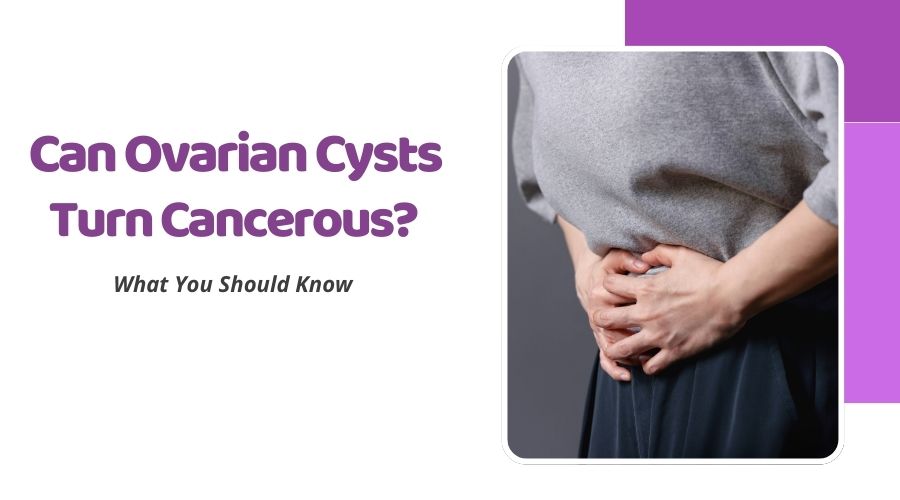
For many women, especially those who are fertile, ovarian cysts are a prevalent health concern. Usually benign, these fluid-filled sacs that form on or inside the ovaries frequently go away on their own. However, one of the biggest fears women have upon hearing the word “cyst” is whether it could turn cancerous. At drpreetitandon, we believe that empowering women with the right information is the first step toward better health. So let’s break down the facts about ovarian cysts and their potential to become cancerous.
What Are Ovarian Cysts?
Fluid-filled sacs called ovarian cysts can develop inside or on the outside of an ovary. The majority of cysts are functional, which means they develop naturally during the menstrual cycle. These include corpus luteum and follicular cysts, which usually disappear on their own in a few weeks.
There are also pathological cysts, which are not related to the menstrual cycle and may require closer monitoring. These include:
- Dermoid cysts (teratomas)
- Endometriomas
- Cystadenomas
While most of these are benign (non-cancerous), the concern arises when cysts grow unusually large, persist over time, or have solid components that could be indicative of malignancy.
Can Ovarian Cysts Turn Cancerous?
The short answer is: yes, but it is rare.
The majority of ovarian cysts are harmless and do not present a significant risk to health. A tiny portion, nonetheless, may be malignant (cancerous). The likelihood of a cyst being cancerous increases with age, particularly after menopause. Women over 50, or those with a family history of ovarian or breast cancer, should be especially vigilant.
Some signs that may raise suspicion include:
- Rapidly growing cyst
- Persistent pain or pressure in the abdomen
- Irregular menstrual cycles
- Unexplained weight loss
- Bloating or changes in appetite
At drpreetitandon, we encourage women to undergo regular gynecological exams to monitor any changes in the ovaries, especially if they fall into higher-risk categories.
How Are Ovarian Cysts Diagnosed?
The majority of ovarian cysts are found by imaging procedures such as ultrasound or regular pelvic checks. If a cyst is detected, your doctor may suggest follow-up scans to monitor its size and appearance. Certain features, like thick walls, solid areas, or septations (internal divisions), may prompt further investigation.
Blood tests such as the CA-125 test can also help in evaluating the risk of ovarian cancer. However, elevated CA-125 levels can also occur due to non-cancerous conditions like endometriosis or pelvic inflammatory disease, so results must be interpreted carefully.
Treatment Options
Watchful waiting is frequently the best course of action for the majority of benign cysts. If the cyst doesn't shrink or continues to grow, your doctor may recommend hormonal birth control pills to regulate ovulation or even surgical removal if necessary.
If there's any suspicion of cancer, surgery may be performed to remove the cyst and examine it thoroughly. In cases where malignancy is confirmed, a more extensive treatment plan, including chemotherapy or radiation, may be needed.
Stay Informed and Proactive
The key takeaway is that not all ovarian cysts are dangerous, but it's important to stay informed and proactive. Monitoring symptoms, attending regular check-ups, and seeking expert advice can make a significant difference in early detection and treatment.
At drpreetitandon, we specialize in women’s health and are committed to providing personalized care for conditions like ovarian cysts. Whether you're dealing with a newly discovered cyst or want a second opinion, our team is here to guide you every step of the way.
Your health matters. Don’t ignore persistent symptoms—consult a specialist at drpreetitandon for expert gynecological care today.



